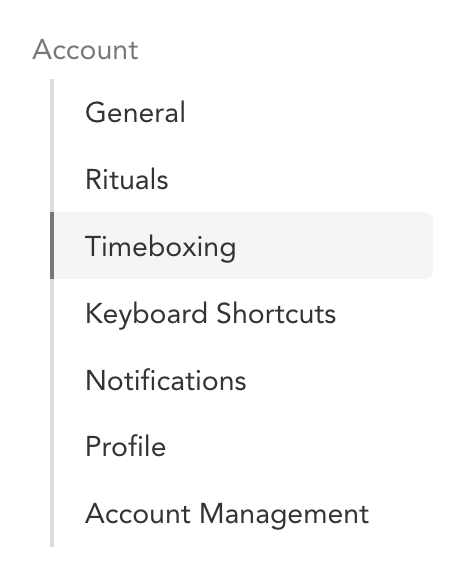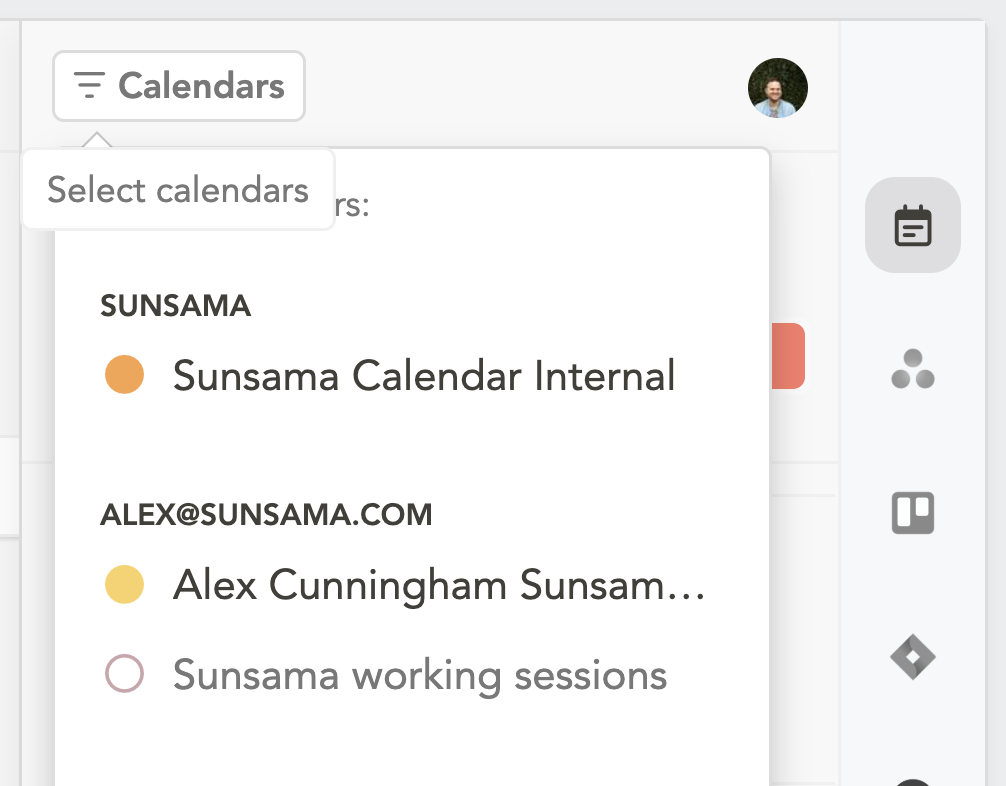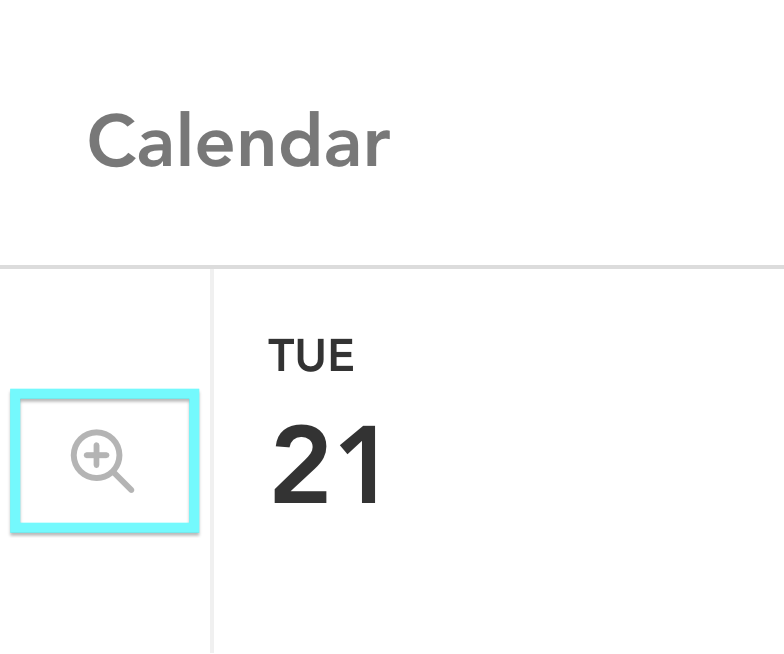Customizing your settings
Control your timeboxing experience with these settings.
Account Settings:
In your Settings, which you can access from the main dropdown menu, there is a section devoted to Timeboxing settings.

Pick which calendars tasks are scheduled to:
Clicking the "Calendars" page will bring you to your calendars, where you can configure which calendars your working sessions should be created on.
Calendar reminders for timeboxed tasks:
With this setting, you can manually override the reminders/notifications settings of the underlying calendar your tasks are timeboxed to. This is useful if you want to disable reminders for Sunsama tasks on a calendar in which you have reminders turned on.
Calendar availability for timeboxed tasks:
For tasks you timebox to the calendar, you can make those events show as available or busy in your underlying calendar.
- Show as busy: If you want time spent working on tasks to show as "busy" to other people who have access to your calendar or to tools that look at your calendar to calculate your availability.
- Show as available: If you want tasks to show up on your calendar but not change your underlying calendar's understanding of your availability.
Calendar privacy of timeboxed tasks:
Control the privacy of your working sessions in your underlying calendar with this setting.
- Calendar default: This will honor whatever setting your underlying calendar uses when new events are created by default.
- Private: This is a good option if you don’t want other people to see what you are working on. With this setting enabled, the event’s visibility will be determined by how your calendar handles private events. Here is information regarding event privacy and calendar sharing for Google Calendar and Outlook Calendar.
- Public: All timeboxed events will be marked as public. This is a good option if you want colleagues to always see what tasks you are working on.
Tasks assigned to private channels or personal contexts will always be added to the calendar as "Private" events for your privacy.
Auto-scheduling gap:
Pick how much time the auto-scheduler should leave between the last item on your calendar and the task being scheduled. This is a great way to give yourself some breathing room between tasks.
Default duration when scheduling tasks:
This will determine the duration of the working session created from a timeboxed tasks. If the task has a planned time, the planned time will override the default duration.
Auto-reschedule tasks when they conflict
When a task is scheduled at the same as another task(s), automatically shift the other task(s) to the next available time.
- Tip: Hold
Shiftwhen scheduling to temporarily disable this behavior.
Auto-reschedule when a task is completed ahead of schedule
When a timeboxed task is completed ahead of schedule, automatically adjust its scheduled end date and shift remaining tasks forward.
Set up your working hours:
Set up your schedules by clicking on the "Edit Schedules" button. This will take you to the “Schedules” page.
Schedules:
Navigate to your Settings page from the main dropdown menu and click on the “Schedules” section to set your auto-scheduling hours.
You can set your default schedules by day, which Sunsama will fallback to by default when auto-scheduling unless there are channel-specific schedules.
You can also set up specific auto-scheduling schedules on a per-channel basis. Sunsama will schedule tasks in these channels according to these schedules. These schedules will override your default scheduling hours.
Calendar settings:
Click “Calendars” in your Settings page to control which calendar your timeboxed tasks end up on.
Default calendar for tasks:
Set a “default for tasks” calendar as a default calendar for working sessions to end up on. To do this, simply click on the calendar you want and turn on the toggle for “default calendar when scheduling tasks”.
Note: The "default for tasks" calendar applies to when you timebox a task to the calendar.
It is not the default calendar for when you create events directly in the calendar in Sunsama. That is the "Default for Events" setting:
Link a channel to a calendar:
You can link a channel to a calendar so that any task in that channel will automatically be timeboxed to that calendar. To do is, click on the calendar and click in the Timeboxing channel setting and select the channel you wish to link to it. This setting will override your “default for tasks” calendar.

Calendar visibility:
It’s important to have the relevant calendars enabled and in view for timeboxing.
If there are any calendars associated with the Google, iCloud, or Outlook calendar(s) you have connected that you don’t need to see or timebox tasks to, you can toggle off the “enable” toggle in your “Calendars page”.
Any calendar that is “enabled” will be able to be viewed in your calendar in Sunsama.
To toggle the visibility of a calendar and its events in Sunsama, simply click on that calendar in the bottom of the left hand panel of the main workspace. If the circle next to the calendar is filled in with a color, that calendar is visible and in view.

What calendars and events are in view influences how Sunsama will auto-schedule tasks, so consider toggling off the visibility of calendars whose events do not block your time (Birthdays, OOO, all day events, etc).
Zoom toggle for calendar view:
There are two zoom levels of your calendar view in Sunsama. Toggle between the view by clicking the - or + button next to the calendar. The more zoomed in view will give you greater control and visibility when dropping tasks into the calendar, and is useful if your calendar is crowded with more/smaller events.

Updated 6 months ago
